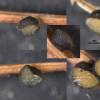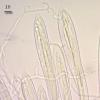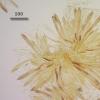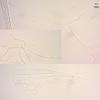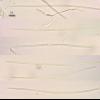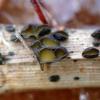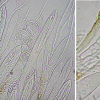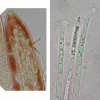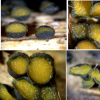
18-12-2025 21:17
Pol DebaenstThe identification took me to Byssonectria deformi

15-12-2025 07:09
 Danny Newman
Danny Newman
indet. Rutstroemiaceae sp. on unk. fallen leavesMc

19-12-2025 10:10
Patrice TANCHAUDBonjour, récolte réalisée en milieu dunaire, a

18-12-2025 17:23
 Bruno Coué
Bruno Coué
Bonjour,je serais heureux d'avoir votre avis sur c

18-12-2025 18:07
Margot en Geert VullingsThese plumes were found on rotten wood.They strong

17-12-2025 18:35
 Michel Hairaud
Michel Hairaud
Bonjour à tous/Hi to everyone I am passing along

15-12-2025 15:48
 Danny Newman
Danny Newman
Melanospora cf. lagenaria on old, rotting, fallen

15-12-2025 15:54
 Johan Boonefaes
Johan Boonefaes
Unknown anamorph found on the ground in coastal sa
This interesting species has showed up at Eriophorum vaginatum leaves in autumn, though i was collecting immature structures in summer, but they were not ready then. Finally after the first frosts it was found with fully developed structures. Hysterothecia densely cover very soft dead leaves laying at sphagnum surface.
The structures fit well with description in Johnston and Scheuer ("Lophodermium eriophori comb. nov." Mycotaxon 87 (2003): 489-492.).
Hysterothecia first pustulate, then outer layer bursting longitudinally or radially, enlarge to become turbinate, ellipsoid or more often circular in outline, hymenium yellow to orangish, outer surface black, to 1.5 mm by long axis, 0.5 mm high.
Asci clavate, with crozier, conical tip, inamyloid, 250 x 20 mk; paraphyses branched in upper part (tree-like), end branches circinate, 2.5–3 mk broad at upper part; spores needle-shaped, with loose sheath, with appendix at obtuse end, 150 (132–173) x 3.3 (2.9–3.9) (n=10).?

As you probably noticed in myco litterature, this species has very rarely been collected.
Brigitte Capoen and I luckily found it last year on October 4 in the main peat bog of SAnta Maria in the Somiedo paradise, (Spain, Asturias,)
Here it was Eriophorum angustifolium
I hereby join images I showed in my presenttaion at the Somiedo Ascomycota 2013 congress in last June.
The main features of your collection do suit ours.
Amitiés
Michel
that is interesting. I will look at other substrates, Er. russeolum as well, but untill now it was only at Er. vaginatum here. Could be abundant occasionally.
Nina.

